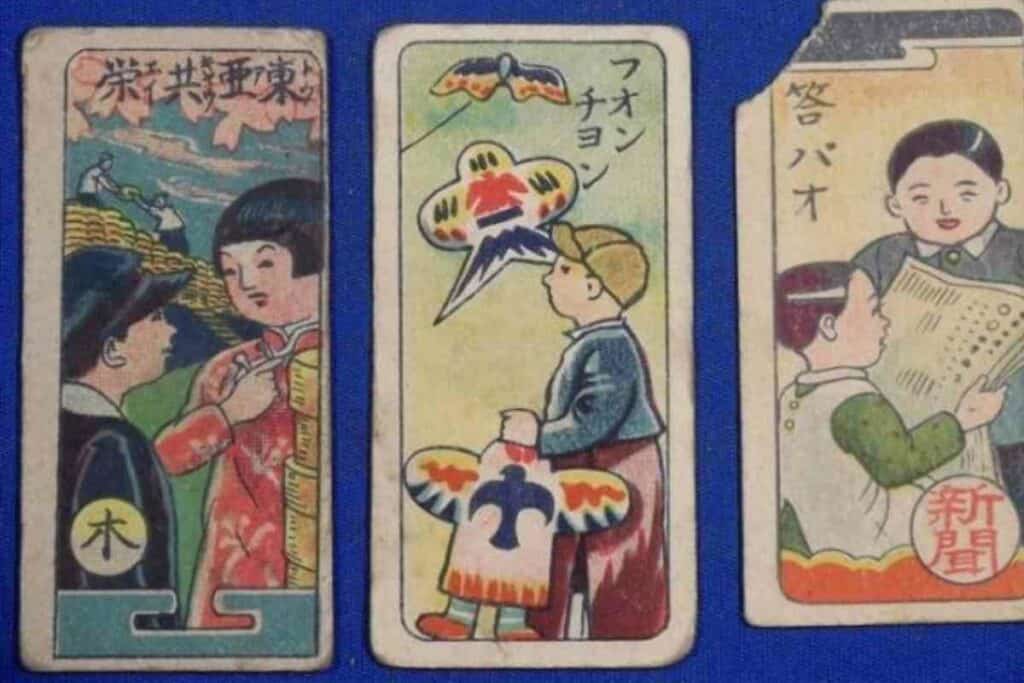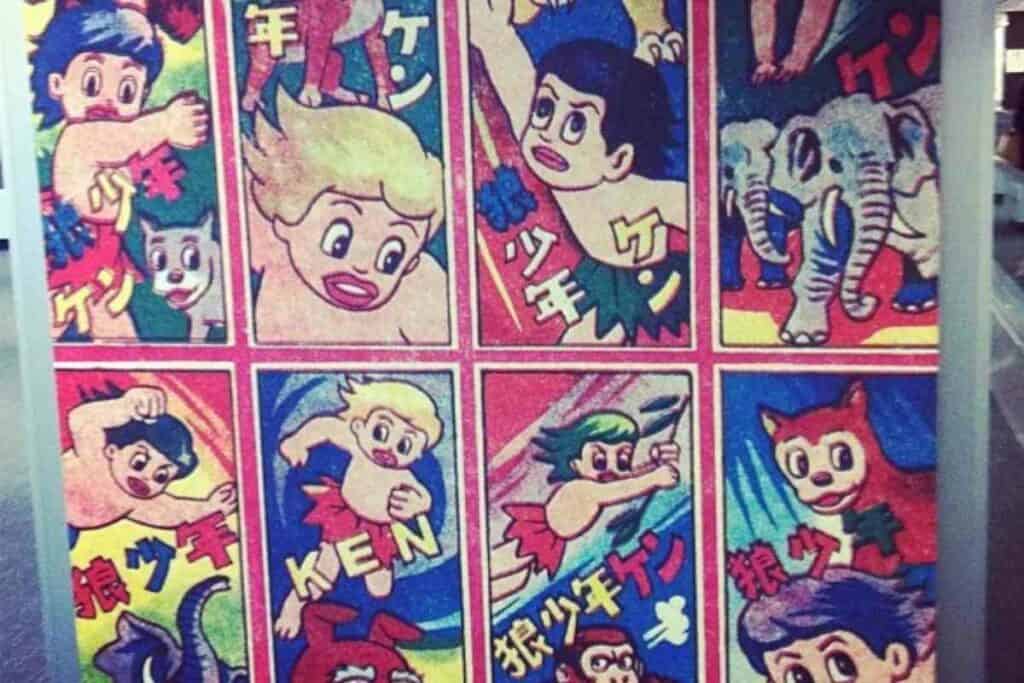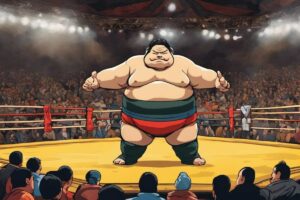A traditional and original Japanese card game, Menko (also known by the names ‘Patchin’ or ‘Bettan’), is quite popular in Japan.
One of many such games, Menko is a multiplayer card game of up to 4 players – much like western card games.

The main differences being that these cards are decorated with anime or manga characters as befitting a game from Japanese culture; as well as the fact that these “battle cards” are used very differently to western ones…
It is a game which exists and has existed in many forms across many cultures worldwide.
What to Expect? We will detail exactly what the cards are, how to play Menko, provide a limited glimpse into the game’s history, and briefly discuss its global variations.
Table of Contents
When was Menko Established?
Menko is considered to be a simple Japanese game which, like many other card games, likely originated in China: a game with the title ‘wáah pín’ is common there.
It is also strikingly similar to the Korean origami gambling game ‘ddakji’, which features as the recruiter’s game of choice in Netflix’s immensely popular Squid Game series (2021).
Since its release, the Korean version has become a global sensation, as well as a meme. In fact, even Origami classes and web searches rose astronomically, for a time.
Once called ‘men’uchi’, little is actually documented about Mekno’s origins but its recorded popularity is present since the Edo period, which began around the beginning of the 15th century.
It has evolved ever since and has been adopted by many other cultures, globally.
Booking.comWhat do Menko cards look like?
In the early men’uchi days, the game was played with clay pieces, like small coins, boasting imges of gods.
Made simply from card, ever since, and often laminated for preservation these days, Menko cards are a similar size to a standard card from a western deck.
However, they are also cut into both squares and circles and vary in size, slightly. Along with the game itself, Menko cards have also evolved over time.
As with baseball cards (both American and Japanese) and now worldwide Pokemon cards, they are collectable and some are even immensely valuable; by the 90s they became miniature spectacles, sporting sparkly borders and shiny holographic images.
Throughout history, the pictures on these cards have represented the cultural context from which they have arisen.
Earlier in Japanese history, they would have been adorned with images of the popular Ninja or Samurai and, by World War Two, the most popular images represented military prowess.
Cards were printed with graphics of war planes, ships, tanks, and the like.
Nowadays, these cards even feature in digital, online versions, in the forum of mobile apps.
How do you play Menko?
The rules are quite simple. The aim of the game is to collect all of the cards, or to have the most cards by the time the end of the game is called.
Cards are placed by each player, on a solid surface, usually the ground. Then, in turn, each player throws a card down at an opponent’s card.
If by sheer force or technique the card flips over, then the flipped card and the one thrown down at it are both claimed by the throwing player.
Simple as the rules are, this game can be frustrating to play and even more so to lose.
Due to the fact that it can be mastered by the use of either Power or Technique, it is accessible to people of all ages – owing much of its popularity to this fact.
How do you win Menko?

It’s mostly about both the technique you use and the amount of force that you put into the strike.
Throwing a card to the ground might seem like an easy thing to do but, if you’ve seen Squid Game, then you know that this isn’t the case at all.
Thanks to its popularity, there are now videos online which claim to demonstrate the perfect winning technique.
The Stance
As with any precision movement, your stance is very important.
So balance is key, therefore: as with some moves in marital arts like Judo, a wide stance is required in order to maintain a centre of gravity.
Feet should be placed so that legs are at shoulder-width distance from one another, one foot slightly ahead of the other.
Your leading foot’s toes should be aligned with the card at which you are aiming, as close as even one or two inches away.
For Increased Stability – Keep your unused arm slightly out at the side of your body. This will also create extra momentum in your movement.
The Hold
Holding the card at its centre, placing your thumb and fingers at its center, appears to be most common method.
Some hold the tip of a corner or the edge and clasp the card like a throwing weapon.
Either way, you need to raise your arm just above shoulder height, so that even your shoulder muscles are tense; keep your hand close to your to body for maximum force.
The Throw
Once your stance has been perfected you are ready to make your move.
A throw is referred to as a ‘stroke’ in light of the fact that players aim to strike a card with the edge or corner tip of another.
YouTube videos detail these strokes, of which there are three:
- Standard stroke – this throw utilises pure force and is aimed directly at the center of your opponent’s card. With enough power and precision, the striking impact and resulting updraft will swoop up the card and possibly flip it over.
- Angled Stroke – striking this way means making a kind of downwards curve ball throwing movement. The arm movement is a semicircle, slightly to the side and obviously towards the floor. Hit the card well enough and the force will roll it. The edge of a card is the best place to aim for this one.
- Pulling Stroke – Last but by no means least, this move aims at the center of the card once more, but you need to slam down the card with an immediate pull back of your arm. Putting in enough effort, sees a card inevitably spin over.
Whichever you use should be based on your own preference, size and ability.
Finally, it is advisable to keep your eye on the target and although it might seem incredibly embarrassing, in similar fashion to a tennis player or martial artist, giving out a shout or scream as you throw can be effective in a few ways, both psychologically and physiologically.
Not only affecting you, but your opponent as well.
What variations of Menko are there?
Along with the aforementioned Korean origami version: ‘ddakji’, variations of this game have crossed continents and oceans alike.

A western variation commercially entitled Pogs, sprang up in America in the 90s and travelled the transatlantic waters to Great Britain.
It became unexpectedly popular and is still played by many to this day.
It was once called Milk Caps, because it was quite clearly played with the caps from milk bottles and originates sometime in the early twentieth century.
Other variations include the Chinese ‘wáah pín’, the game ‘teks’ from the Philippines, and the Catalonian ‘Patacó‘ game.
These types of game have been very popular for gambling throughout the world and the course of History.
Final Thoughts
From East to West, different takes on Menko have entertained adults and children of all ages.
A popular pastime in many parts of the world, this card game and many others like it, have brought people together in both small and large numbers.
Through tournaments and smaller competitions, card games can be as cross-culturally unifying as language.
From what is considered to be a little bit of fun, comes exquisite artwork in the cards’ styles and graphics, fierce competition and cultural symbolism, which make Japanese card games some of the most enjoyable and widely played games in the contemporary world.
In Case You Missed It
- The Forbidden Japanese Island That Will Give You Nightmares
- Miss Japan Forced to Wear Sailor Moon Costume Since Childhood: Claims It’s the Secret to Her Success
- Essential Guide to Japan VPN: Secure Access and Privacy for Travelers
- Sumo Wrestler Suit for Adults by TOLOCO: Best Sumo Suit?
- Eki Stamp Book (Gotta Collect Them All!)
- Explore the Fascinating World of Japanese Rubik’s Cubes









